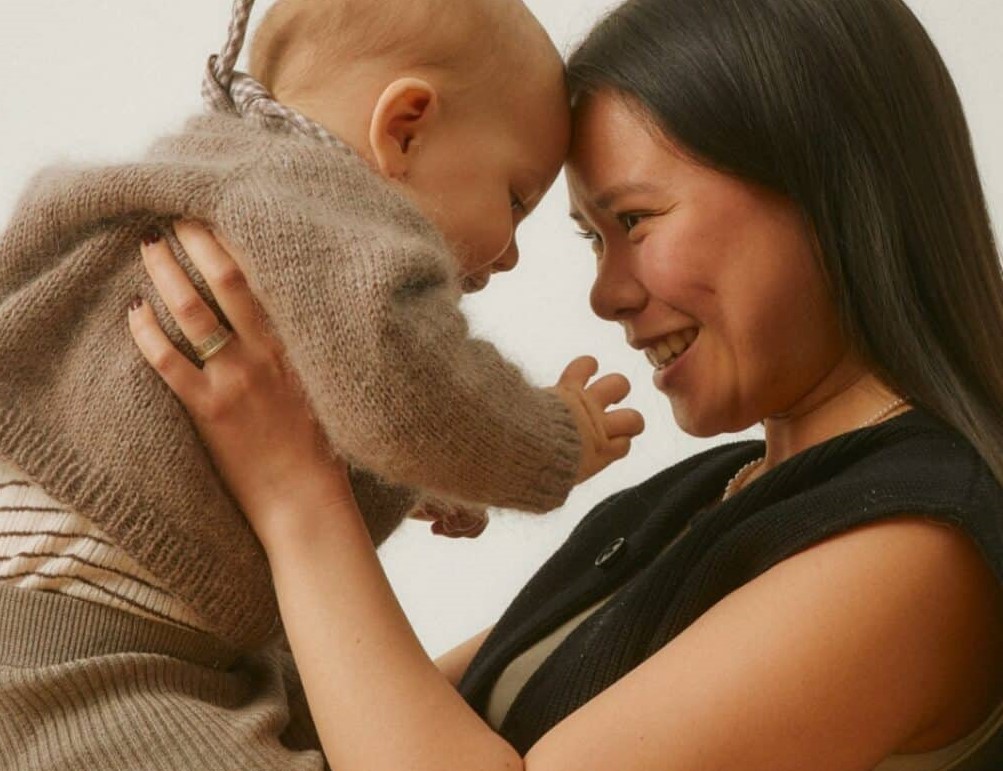Breastmilk in Surrogacy: What Are My Options?
Welcoming a new addition to the family through surrogacy is a joyous occasion, but it can also come with its share of questions and decisions to make. One such decision that Intended Parents face is regarding breast milk for their newborn. Breast milk provides essential nutrients and antibodies to newborns that are crucial for their growth and development. Let’s explore the various options Intended Parents have when it comes to breast milk in a surrogacy arrangement.
Breastfeeding by the Surrogate:
Some surrogates may offer to breastfeed the baby after birth. This can be a deeply personal decision influenced by various factors, including the surrogate’s own breastfeeding experience, her relationship with the Intended Parents, and her desire to provide the best possible start for the baby. Intended Parents must also weigh their feelings on whether or not it is appropriate for a surrogate to breastfeed their baby. Breastfeeding is sometimes viewed as a bonding experience between a mother and baby due to the intimate physical closeness, skin-to-skin contact, and the release of oxytocin, often called the “love hormone,” which fosters feelings of attachment and connection. This close interaction during breastfeeding can promote a strong emotional bond between a mother and baby, providing a sense of security, comfort, and reassurance for both. Consequently, societal attitudes towards a surrogate breastfeeding a newborn may be influenced by the perception that breastfeeding fosters a unique maternal-child bond. However, it’s crucial to recognize that bonding and attachment can be formed through various nurturing activities, and Intended Parents can develop deep and meaningful bonds with their children through responsive caregiving and affectionate interactions. Breastfeeding is not a required part of the parent-child bonding experience. That said, many Intended Parents feel very strongly that is wholly inappropriate for a surrogate to breastfeed their children because of this type of bonding. Additionally, many surrogates do not want to breastfeed children that are not theirs. Intended Parents should discuss this option openly with their surrogate at matching to ensure that everyone involved is on the same page.
Donor Milk From a Surrogate:
The process for a surrogate to become a breast milk donor for her Intended Parents involves careful consideration, communication, and coordination between all parties involved.
The surrogate and her Intended Parents should have open and honest discussions at matching about the possibility of the surrogate providing breast milk for the baby. This conversation should address the surrogate’s willingness, comfort level, and ability to pump and donate breast milk. If both parties agree to the arrangement, the details regarding breast milk donation should ideally be included in a surrogacy contract. The contract should outline each party’s rights, responsibilities, and expectations regarding breast milk donation, including issues such as pumping schedule, storage, transportation, and any associated costs. Once a baby or babies are born, the surrogate can begin pumping and storing breast milk according to established guidelines. She may use a breast pump to express milk regularly, storing it in sterilized containers or breast milk storage bags. Proper hygiene and storage techniques are essential to maintain the safety and quality of the donated milk.
Depending on the agreed-to logistics, the surrogate may deliver the donated breast milk to the Intended Parents directly or through a designated intermediary, such as a milk bank or courier service. Proper handling and transportation protocols should be followed to ensure the milk remains safe for consumption.
Throughout the milk donation process, ongoing support, communication, and collaboration between the surrogate and Intended Parents are crucial. This may include regular updates on pumping progress, addressing any concerns or challenges, and maintaining mutual respect and gratitude for each other’s contributions to the well-being of the baby.
It’s important to note that breast milk donation by a surrogate is a voluntary and deeply personal decision, and not all surrogates may choose to or be able to donate breast milk. Additionally, Intended Parents should consult with their healthcare provider or a lactation consultant to ensure the safe handling and feeding of donated breast milk to their baby.
Non-Surrogate Donor Breast Milk:
For Intended Parents who prefer breast milk but do not have the option of donated breast milk by the surrogate, donor breast milk can be a viable alternative.
Donor milk banks carefully screen and pasteurize donated breast milk to ensure its safety and quality. This option allows babies to receive the benefits of breast milk even when breastfeeding is not possible.
Formula Feeding:
While breast milk is highly recommended by many medical professionals, formula feeding remains a common and healthy choice for many families, including those formed through surrogacy. Modern infant formulas are designed to provide essential nutrients that support healthy growth and development. Intended Parents who opt for formula feeding should discuss their choice with their healthcare provider to ensure they select the most suitable formula for their baby’s needs.
Combination Feeding:
Some families choose to combine breastfeeding, donor milk, or formula feeding based on their unique circumstances and preferences. Combination feeding allows flexibility and can be particularly beneficial for families where breastfeeding may not be feasible full-time.
Lactation Induction:
In some cases, Intended Parents may explore options for inducing lactation in one or both parents to provide breast milk for their baby. Lactation induction typically involves hormone therapy, breast stimulation, and support from lactation consultants. While this option may require time, dedication, and support, it can allow Intended Parents to experience the bonding and benefits of breastfeeding.
Lactation induction, also known as induced lactation, is the process of stimulating milk production in individuals who have not experienced pregnancy.
Before beginning the process of lactation induction, individuals should educate themselves about the anatomy and physiology of lactation, as well as the techniques and strategies for inducing milk production. This may involve reading books, attending support groups, or consulting with lactation consultants or healthcare providers experienced in lactation induction.
Hormonal therapy is often used to mimic the hormonal changes that occur during pregnancy and stimulate milk production. This typically involves the use of medications such as estrogen and progesterone to prepare the breast tissue for lactation. Some individuals may also use medications such as domperidone or metoclopramide to increase prolactin levels, the hormone responsible for milk production.
Breast stimulation, through techniques such as hand expression, breast massage, or the use of a breast pump, is essential for promoting milk production. Frequent and regular breast stimulation helps to signal the body to produce milk and can increase milk supply over time.
Proper nutrition and hydration are important factors in supporting milk production. Intended Parents who are inducing lactation should maintain a well-balanced diet, stay hydrated, and consider taking supplements as recommended by health providers.
Lactation induction can be a gradual process, and it may take time to establish a full milk supply. Intended Parents should be patient and persistent, continuing with their lactation induction efforts even if progress is slow. It’s important to remember that every individual’s experience with lactation induction is unique, and success may vary. Intended Parents pursuing lactation induction should seek support from lactation consultants, support groups, or online forums where they can connect with others who have gone through similar experiences. Supportive partners, family members, and healthcare providers can also play a crucial role in providing encouragement and assistance throughout the process.
It’s essential for Intended Parents to approach lactation induction with realistic expectations and to prioritize the well-being of both themselves and their child. While not all individuals may be able to achieve a full milk supply through lactation induction, any amount of breast milk provided can offer valuable benefits for the child’s health and bonding experience.
Ultimately, the decision regarding breast milk in a surrogacy arrangement is a deeply personal one that should be made based on the best interests of the child and the preferences of the Intended Parents and surrogate. Open communication, mutual respect, and support are essential throughout the decision-making process. Whether through breastfeeding by the surrogate, donor milk, formula feeding, or a combination of methods, what matters most is providing the newborn with the love, care, and nutrition they need to thrive.
FAQ: Navigating Breast Milk Options in Surrogacy
Should I consider asking a surrogate breastfeed my baby?
The decision to have the surrogate breastfeed your baby is deeply personal and depends on various factors such as the surrogate’s willingness, her breastfeeding experience, and your own preferences. Breastfeeding can foster a unique bond between the surrogate and the baby, but it’s essential to have open discussions and ensure everyone involved is comfortable with this arrangement.
How can a surrogate become a breast milk donor?
If both parties agree, the process for a surrogate to become a breast milk donor involves discussing the possibility during matching with Intended Parents and including the details in the surrogacy contract. The surrogate can then pump and store breast milk according to established guidelines, and arrangements can be made for transportation and delivery to the Intended Parents.
Can Intended Parents induce lactation to provide breast milk?
Yes, lactation induction is a possibility for Intended Parents who wish to provide breast milk for their baby. The process involves hormonal therapy, breast stimulation, proper nutrition, and hydration, and it’s essential to approach it with realistic expectations and seek support from healthcare providers and lactation consultants.
What factors should I consider when choosing breast milk options in surrogacy?
The decision regarding breast milk in a surrogacy arrangement should prioritize the best interests of the child and consider factors such as the surrogate’s willingness and ability to provide breast milk, the preferences of the Intended Parents, and the availability of other options such as donor milk and formula feeding. Open communication, mutual respect, and support are essential throughout the decision-making process.











